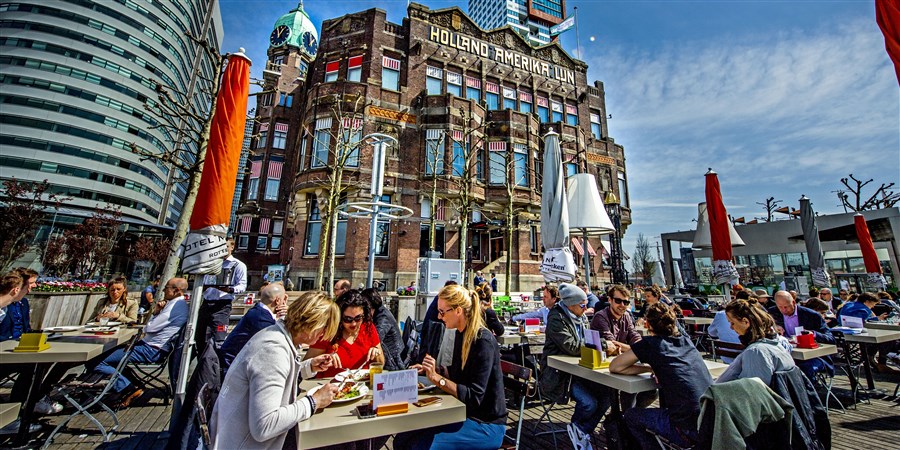Environmental impact of tourism sector remains high

Furthermore, 6 percent of net energy consumption by businesses was accounted for by the tourism sector. Its share of greenhouse gas emissions during that period was 5 percent, which includes emissions from aviation and the accommodation and food services sector.
Compared to other sectors, the tourism sector contributes large amounts in environmental taxes and levies, particularly through energy taxes and excise duties.
| Categorie | Share (% of the total from Dutch businesses) |
|---|---|
| Value added | 4 |
| Environmental taxes | 7 |
| Water consumption | 9 |
| Use of biomass | 6 |
| Net energy consumption | 5 |
| Greenhouse gas emissions | 5 |
| Particular matter emissions | 2 |
| Waste generation | 1 |
| Use of metals | 0.4 |
| Use of minerals | 0.2 |
Greenhouse gas emissions from tourism not yet back to pre-pandemic levels
In 2020 and 2021, tourism contributed much less to the economy and to the burden on our environment than it did immediately before the coronavirus pandemic. In 2022, restrictions to limit the spread of coronavirus were lifted, and the value added by the tourism sector amounted to 3.5 percent of the total Dutch economy in that year. That was 0.8 percent lower than in 2018. Until that year, the tourism sector’s share of value added in the Dutch economy had been rising.
The pandemic restrictions had a major impact on the travel behaviour of tourists and on the sector’s impact on the environment. On a number of indicators, such as biomass usage and emissions of greenhouse gases and particulate matter, the environmental impact of tourism was smaller in 2022 than it was in 2018. The use of biomass fell from 7.2 percent in 2018 to 5.9 percent in 2022. The sector’s share of greenhouse gas emissions was 6.2 percent in 2018, but had fallen to 5.1 percent by 2022. Particulate matter emissions fell from 1.9 percent to 1.5 percent of the total during the same period.
The tourism sector recovered in 2023, when its contribution to the Dutch economy was 3.8 percent. That was an increase compared to 2022.
| 2022 (% of Dutch businesses) | 2018 (% of Dutch businesses) | |
|---|---|---|
| Value added | 3.5 | 4.3 |
| Use of biomass | 5.9 | 7.2 |
| Greenhouse gas emissions | 5.1 | 6.2 |
| Particulate matter emissions | 1.5 | 1.9 |